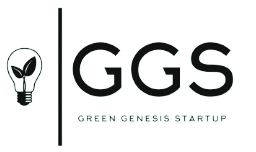
This case study aims to demonstrate that it is possible to create sustainable, and innovative materials for fashion, starting from the by-products of citrus juices, using an innovative, and patented process, and collaborating with industry leaders.
They are bringing sustainable practices to the fashion, and textile industry, helping to shape a new concept of luxury based on an ethical, and sustainable lifestyle.
Orange Fiber is an Italian company that has patented, and produced sustainable fabrics from citrus by-products; born in Catania in 2014 to produce high-quality fabrics for the fashion-luxury segment. They start from the citrus industry’s result- everything that remains after the juice production - which otherwise would have to be disposed of with economic, and environmental costs. They transform this by-product into the perfect ingredient for sustainability-conscious brands, and designers through a fully traced, and transparent supply chain.
Every year 700,000 tons of waste deriving from the processing of citrus fruits are produced.
What if we don't throw them away?
This is the question posed by the two Sicilian entrepreneurs who have developed a patent that transforms orange waste into silk.
How is it possible?
The fabric is composed of citrus pulp, the wet residue that remains at the end of the industrial production of citrus juice, and that can no longer be used but only thrown away as waste.
Thanks to the nanotechnologies with which to make vitamin clothes, the two entrepreneurs could exploit the pulp’s potential for the extraction of
Orange Fiber is one of the precursor examples of that circular economy we have heard so much about recently.
Let's see why Orange Fiber fabric falls within the concept of circular economy:
1. The raw material used is recycled. The citrus fruit pulp derives from the citrus industry, which means that the manufacturing process to get to the finished fabric has a low environmental impact, in all stages of processing, no resources are used for the cultivation of the raw material, no chemical pollutants are used, and the production of waste is almost zero.
2. Apply the economic model of upcycling. The principle according to which the waste from the creation of a product is used to create an entirely different product with a particular name, that is, upcycling is one of the five possible business models for achieving a circular economy. The benefits of upcycling are all in favor of the environment, avoiding using materials, and limiting the pollution deriving from waste disposal. From this point of view, the benefits are not only environmental but also economical; it is well known that waste disposal costs money. The quantity of citrus waste in Italy amounts to more than 700 thousand tons per year, imagine being able to reuse them all instead of disposing of them.
3. The fabric obtained is biodegradable. The life cycle of the clothes created by the Orange Fiber fabric is circular at 360 degrees; after being used, and having reached the end of its life, it can be duly composted without leaving any trace, and without polluting, even the dyes used to give to the fabrics the necessary liveliness are all natural, and non-polluting, in this way they do not pollute either during production or during decomposition.
Key Take-Aways
• Sustainable fabrics,
• Sustainable fashion,
• Circular economy,
• Eco-responsible innovation,
• Nanotechnologies
Through this case study, you will learn that:
- technology has helped this start-up thanks to an innovative process of extracting cellulose from citrus fruits suitable for spinning.
- Developing innovative, and virtuous companies such as Orange Fiber is essential to reduce future environmental damage.
- Orange Fiber is one of the precursor examples of the circular economy because the raw material used is recycled, it applies the economic model of upcycling, and the fabric obtained is biodegradable.
Email/Contact
